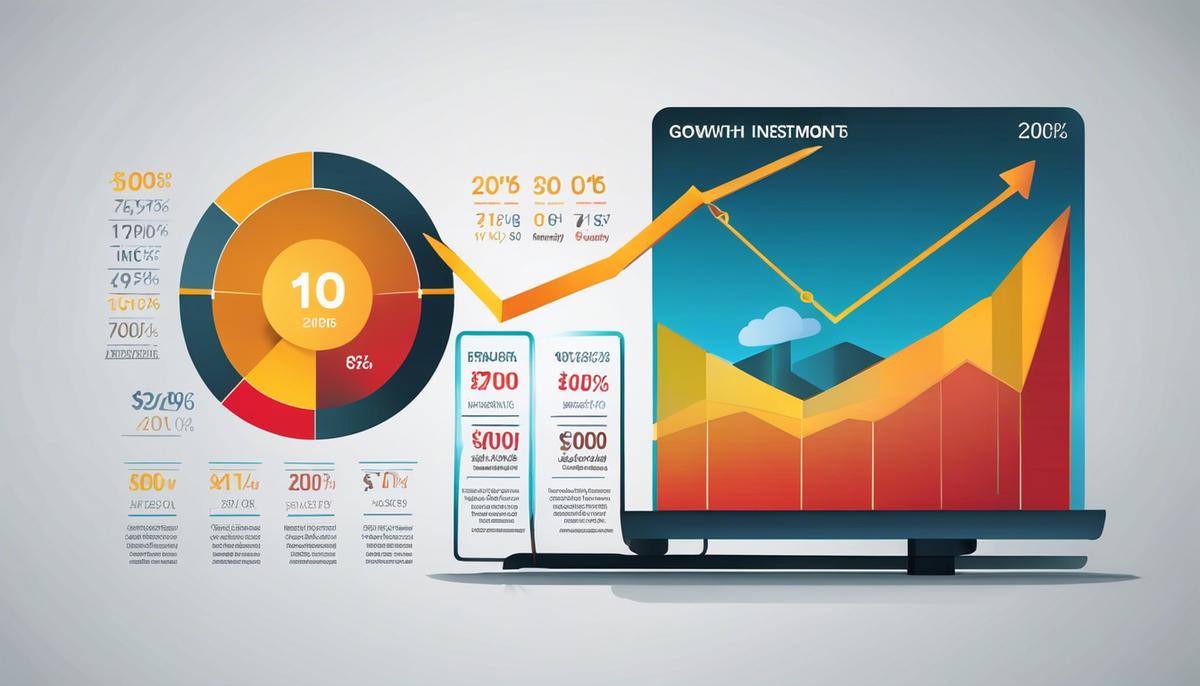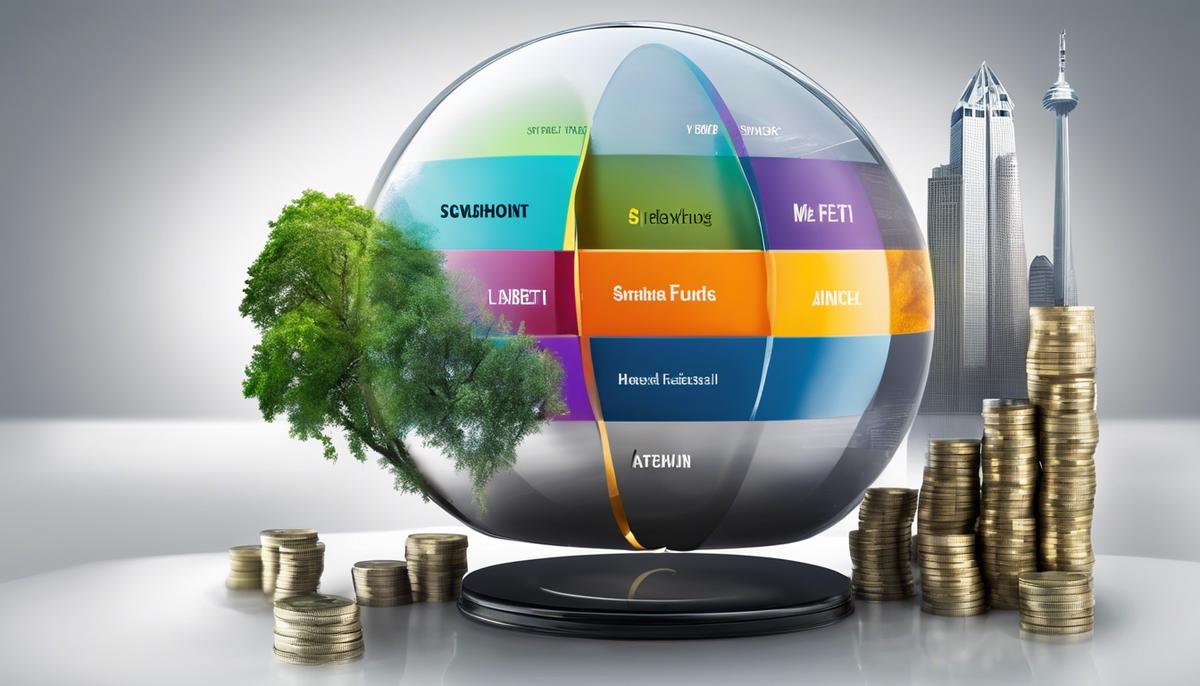In the captivating world of investing, Exchange-Traded Funds (ETFs) and Mutual Funds often become the subject of interest. To the uninitiated, these financial instruments seem mystifying with their complexity. This essay demystifies these terms, beginning with understanding the basics of ETFs and Mutual Funds, offering a glimpse into their key features, types, and their conspicuous role in the global financial market. Diving further into the nuances, we contrast ETFs and Mutual Funds, unmasking their unique structures, costs, convenience, and profitability potential. The narrative doesn’t end here and explores the pros and cons of investing in these instruments, enlightens with strategic direction, and finally prophesies the future trends in the domain of ETFs and Mutual Funds.
Understanding the Basics of ETFs and Mutual Funds
When it comes to the financial world, knowledge provides the power to make informed decisions and reaps economic rewards. This article aims at demystifying two cornerstones of the investment realm: ETFs (Exchange-Traded Funds) and Mutual Funds. These financial instruments have distinct features, reward potential and risk level, giving them a unique appeal based on an individual’s financial goals.
Firstly, understanding the basics of these two investment types is essential. Mutual Funds are investment vehicles managed by professionals that pool money collected from many investors to purchase a diversified portfolio of securities such as bonds, stocks, or similar assets. ETFs, on the other hand, track an existing index like the S&P 500 and are listed on the stock exchange, meaning they can be bought and sold like ordinary stocks during trading hours.
With regards to management style, Mutual Funds typically involve active management, where fund managers actively make decisions about what securities to buy or sell, aiming to outperform the market. ETFs usually operate on a passive management strategy, tracking an index and replicating its performance, hence often incurs lower management fees compared to mutual funds.
Liquidity is another fundamental aspect to consider. ETFs have a high-liquidity feature that Mutual Funds lack. They can be traded throughout the day at prices that fluctuate based on market dynamics, just like individual stocks. Mutual funds, conversely, only trade once a day after the market closes, at the net asset value price.
With respect to investment minimums, Mutual Funds often require minimum investments which may vary from fund to fund. ETFs, on the contrary, do not have minimum investment requirements beyond the cost of one share and any brokerage commissions that may apply to the transaction.
In terms of tax efficiency, ETFs generally have an edge. Their unique structure tends to generate fewer capital gains distributions which implies fewer taxable events, making them potentially more tax efficient than mutual funds.
Understanding the distinct features and benefits of ETFs and Mutual Funds is an indispensable part of creating an effective and diversified investment portfolio. Their individual characteristics and unique pros and cons mean that they cater to different investment strategies and financial goals. Critical discernment is required to determine which investment avenue aligns best with your particular objectives.
Remember, a sound investment decision is not merely a choice between ETFs or Mutual Funds, it involves taking a holistic view that considers your financial situation, risk tolerance, and long-term ambitions. The success of your wealth journey depends on strategic and intentional decision-making.

The Differences Between ETFs and Mutual Funds
Diving deeper into the domain of global investments, there are striking aspects that shed light on the differences between Exchange Traded Funds (ETFs) and Mutual Funds. Beyond the basics: management, liquidity, investment minimums, and tax efficiency, these two types of investment vehicles differ in regards to structure, accessibility, and potential profitability.
Structurally, ETFs remain appealing for the savvy investor due to their innate flexibility. Ever adaptable, they can be bought and sold throughout the day with prices that fluctuate along with the stock market. This contrasts sharply with mutual funds, where transactions occur once a day after market close with a price determined at the daily net asset value. The operational efficiency tied with ability to trade ETFs intraday is a nod to the modern investor’s demand for immediacy and control, thus making it a viable option for those with an eye for timely opportunities.
Another distinctive element is the distribution and accessibility of these investment devices, pivotal in the game of portfolio management. ETFs can be freely traded between investors on the stock market, encompassing a broad spectrum of asset classes. Whether it’s stocks, commodities, bonds, or a cocktail of these, the world remains within reach for discerning portfolio diversifiers. Mutual funds, however, face more constraints regarding accessibility. While they do offer a modicum of diversification, mutual funds often have purchase restrictions, early redemption fees and set investment minimums – all possible hurdles for individuals aiming to dynamically adjust their portfolio.
The potential profitability of these investments is a compelling nuance. Though ETFs and mutual funds both hinge on the performance of their underlying assets, it is the unique mechanisms at play that tip the scales. ETFs, akin to single stocks, lend themselves to strategic maneuvers such as short-selling, margin buying, and implementing stop and limit orders to maximize gains or minimize losses. Mutual funds, while generally seen as a long-term, low risk strategy, lack this level of flexibility, pegging returns to the more static daily net asset value.
Let’s not forget the integral role that expense ratios play. ETFs typically have lower expense ratios than mutual funds due to their “passive” investment approach vis-à-vis the more “active” style of mutual funds. Lower management fees and operational costs translate into higher net returns for investors in the long run. Thus, ETFs continue to secure themselves as a solid, cost-effective choice for the astute.
In conclusion, the waters remain deep and deepening for global investments. As today’s shrewd investors dare to navigate and explore, the distinctions between ETFs and Mutual Funds – specifically in structure, accessibility, and profitability – redraft the financial landscape, creating more tailored, strategic options. Each investment vehicle possesses its own potential rewards and risks, but discernment lies in the hands of the forward-thinking mover and shaker, who is constantly on the watch, ready to seize the next lucrative opportunity.

The Pros and Cons of Investing in ETFs and Mutual Funds
The landscape of financial investments is ever evolving, presenting myriad opportunities to the discerning investor. In the quest for financial growth, Exchange-Traded Funds (ETFs) and Mutual Funds both offer distinct advantages and potential drawbacks. It’s essential to understand these facets and their impacts on your financial vision.
Examining strategies and implications of operational management, ETFs and Mutual Funds each exhibit unique elements. Passive management inherent in many ETFs often results in lower operational costs. Their costs are further driven down through fee structures due to their inherent operational efficiencies. Conversely, Mutual Funds often employ active management strategies that can yield higher returns but also come with higher expenses for professional management and more frequent transactions. The deciding factor inherently becomes a choice between cost-efficiency versus potential for higher returns.
In terms of investment risk profile, investors need to consider the inherent volatility of ETFs relative to Mutual Funds. With ETFs replicating the performance of a specific index, their performance and risks are directly aligned with market conditions. On the other hand, Mutual Funds, with diverse assets and a team of professional managers, typically provide an arguably safer investment opportunity with less susceptibility to market fluctuations.
Moreover, a critical difference between ETFs and Mutual Funds lies within their investment approach. ETFs offer a great deal of flexibility as they allow for targeted strategic approaches such as short-selling and margin buying. Mutual Funds, however, generally frown upon frequent trading. Their principle lies within long-term growth through managed risk exposure making them a popular choice for conservative investors.
When comparing the expense ratios, particularly for cost-conscious investors, ETFs generally remain the winner. The passive management approach of ETFs often results in lower expense ratios, making them an attractive choice. Mutual Funds, on the other hand, need to compensate for active professional management and frequent transaction costs, leading to higher expense ratios.
On the spectrum of accessibility and distribution, ETFs provide a wealth of opportunities given their ability to cater to a wide range of asset classes. Unlike Mutual Funds, which often impose restrictions, expense ratios and early redemption fees, ETFs can be traded freely, thereby enhancing their flexibility and potential for tailored investment strategies.
In the rapidly transforming global investments landscape, potential profitability no longer solely depends on the type of investment. Rather, it now depends more on a cohesive strategy that can aptly assimilate these unique investment attributes into a singular, dynamic approach.
Ultimately, the choice between investing in ETFs or Mutual Funds predominantly falls down to personal investment goals and individual risk tolerance. The financial landscape is filled with nuanced opportunities – the magic lies in cultivating a capacity for discernment and seizing those opportunities that align most congruently with personal aspirations and financial strategies. Be bold, innovative, and intuitive, and always keep substantial room for multifaceted learning because the world of investments never falls short of lessons and surprises.

Strategies for Investing in ETFs and Mutual Funds
With a good understanding of what Mutual Funds and ETFs are, as well as their management, features, and benefits, investors are now in a better position to optimize returns while mitigating risks. Let’s walk through some practical strategies to get the most out of these investment vehicles.
Firstly, investors should carefully consider the fund’s track record. While past performance is not indicative of future results, understanding how the fund has performed in various market conditions can offer useful insights. For Mutual Funds, look for consistency in returns over a long-term period. For ETFs, pay attention to the tracking error—the difference between the ETF’s performance and that of its underlying index. Lower tracking errors indicate a more efficient ETF.
Next, dissect the portfolio holdings. Whether it’s an ETF or a Mutual Fund, knowing what securities the fund holds, their allocation, and the diversification strategies is key to understanding potential risks and returns. Investors should look for a balanced portfolio that aligns with their risk tolerance and investment horizon.
One should also scrutinize the expense ratio. While it’s true that ETFs typically offer lower expense ratios, investors should not neglect to examine this in detail. Remember, every little bit of savings counts and can significantly impact returns in the long run.
Professional advice can be invaluable in this pursuit. The world of ETFs and Mutual Funds is vast—involving varied industries, diverse security types, and complex strategies. A financial advisor can assist in navigating this landscape, aligning fund choices with each investor’s unique financial goals and risk thresholds.
Moreover, it’s important to be aware of ongoing business and financial events. ETFs and mutual funds embody a broad range of sectors, making them susceptible to shifts in the economic climate. Staying abreast of relevant news, market developments, and global trends is paramount to mitigate potential risks.
Another often overlooked strategy involves leveraging one’s professional network. Financial peers and mentors can offer unique insights, advice, and experience-based pointers. Remember, networking doesn’t have to be a formal event—it can happen in daily conversations or through virtual platforms.
Lastly, and most importantly, exercise patience. Both ETFs and Mutual Funds are typically designed as medium to long-term investments. It may take time for their true potential to unfold. Remember, Rome wasn’t built in a day, and the same principle applies to building your financial empire.
These strategies call for proactivity, patience, and diligence. Cultivating an in-depth understanding of fund structures, monitoring global trends, and employing the help of professionals can lead to an optimized, risk-mitigated portfolio. This is not just about making money—it’s about becoming a savvy, empowered investor.

The Future Outlook for ETFs and Mutual Funds
Looking ahead, the landscapes of ETFs and Mutual Funds are anticipated to undergo certain shifts influenced by evolving investor behaviours, regulatory amendments, and technological advancements. There is an increasing appetite amongst modern investors for transparency, automation, and digitization in fund management, which is expected to shape future trends in these investment vehicles.
One significant trend visible in the ETF arena is the rise of actively managed and thematic ETFs. While ETFs have long been synonymous with passively managed, index-matching investments, the increasing demand for higher returns is compelling issuers to venture into the domain of active management. Thematic ETFs, focusing on specific sectors or trends like technology, renewable energy, and healthcare, are becoming prevalent, making ETF investing an exciting opportunity for new-age investors.
In Mutual Funds, the shift towards ESG (Environmental, Social, Governance) investing is emerging as a key trend. Aligning with worldwide efforts for responsible and sustainable development, fund managers are underpinning investment strategies on ESG parameters. The demand for ESG Mutual Funds is expected to surge, transforming the traditional image of mutual funds.
Another noticeable trend is Robo-advisors, automated trading platforms that build personalized portfolios of ETFs, thereby expanding portfolio diversification, lowering costs, and simplifying the investment process. This blend of technology and finance is leveraged in Mutual Funds too, primarily in distribution and service.
That said, the rapidly evolving landscape of ETFs and Mutual Funds demands constant vigilance. Investors are advised to monitor closely the performance of different funds, the economic and market conditions, changes in legislation, and technological innovations. They should evaluate the potential of emerging markets, and the relevance of global and local economic issues to their chosen funds.
Stay actively involved in understanding the dynamics of the global financial market and exercise sound judgement in selecting a fund matching one’s goals and risk tolerance. Being a part of a professional network, and constantly leveraging it to gain insights and perspectives, will also prove beneficial.
In conclusion, with the rise of trends like thematic and active ETFs, ESG focused Mutual Funds, and Robo-advisors, the investment landscape is moving towards integration, personalization, and digitization. Every move in investing requires diligence, patience, and informed decision-making. Despite the evolving market conditions, these meticulous strategies remain constant. Time in the market beats timing the market, always.

ETFs and Mutual Funds, with their unique attributes and differing characteristics, provide diverse opportunities for investors. As we navigate through the intricacies of these instruments, we are reminded not just of their rewarding potential but also the associated risks and challenges. The knowledge of strategic investment, understanding market trends, and tax efficiencies equip us with the tools to make prudent decisions. The future of ETFs and Mutual Funds seems promising, albeit with new challenges on the horizon, necessitating a constant need for adaptability and forward-thinking. As we step into this exciting realm of investing, maintaining an informed, balanced perspective is our key to unlocking these avenues effectively and achieving our financial goals.



